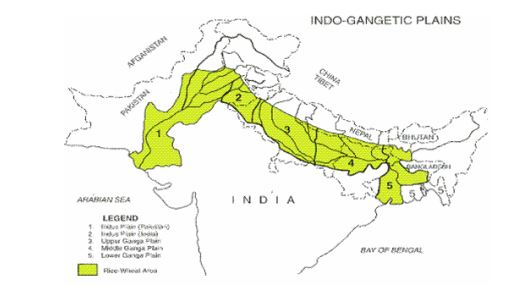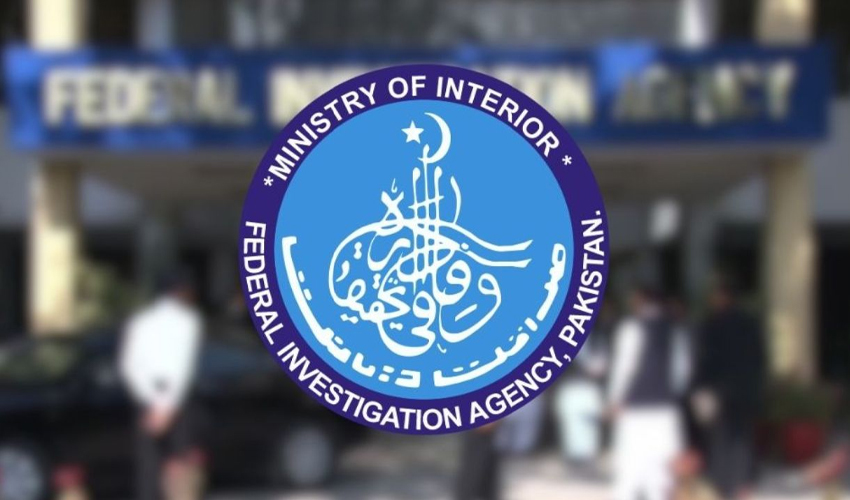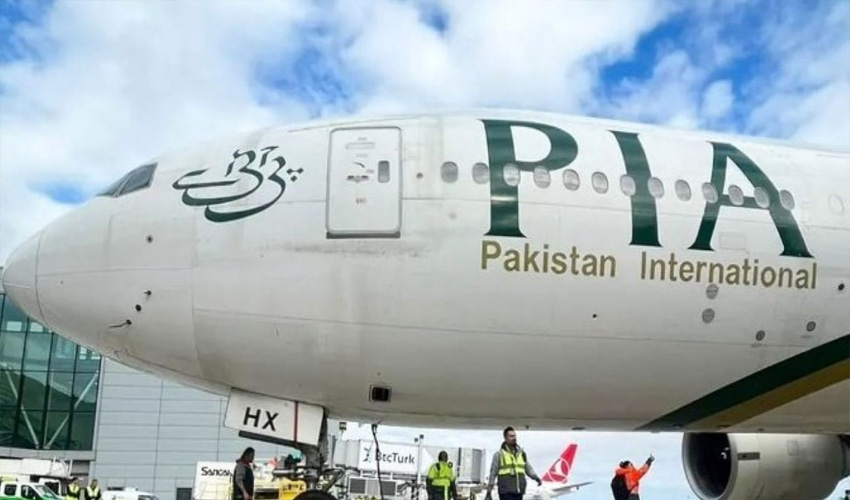Without rain for two months, Lahore saw its air quality index (AQI) touching the dangerous level of 450 tiny particulate matter (PM2.5) on December 16, 2023. It was 30 times higher than the World Health Organization’s recommended maximum average daily exposure and considered hazardous.
As a result, the Punjab Government had to declare a ‘smog emergency’ in Lahore and nearby districts. Schools were shut, markets closed and face masks were made mandatory. For the first time in the history of Pakistan, the government made arrangements to induce artificial rain in Lahore to provide temporary relief from the hazardous effects of poor air quality.
Artificial rain was induced in an attempt to lowering pollution levels in Lahore. The Punjab Government used cloud seeding to create rain in 10 locations around the city using a small Cessna plane with UAE’s cooperation. Citizens experienced shower-like rain in different locations. Environment Minister in Punjab, Bilal Afzal, claimed that cloud seeding and artificial rain was introduced for the first time and it was a success. He, however, admitted that the rainfall was minimal and scanty. He felt elated that due to this the air quality of Lahore improved significantly and the AQI dropped to 150 PM. However, the minister also said that the benefits of this rain were short-lived as the pollution was back to square one after two to three days.
Hazardous air quality is not limited to Lahore. India’s capital city — Delhi — ranks ahead of it. Both cities top the list of most-polluted cities of the world.
This “toxic” air that we are breathing is now transcending borders and affecting many lives. Smog is a common cause for concern, as nationals of both -- India and Pakistan -- are severely affected. The citizens of both countries are breathing the same toxic air, which is causing severe health issues. The situation is only getting worse with each passing year.
In response to the alarming and dangerous situation, the Delhi Government in India also reportedly considered the implementation of artificial rain to counter smog, but it could not bring it to fruition. The Aam Aadmi Party government in India’s national capital also derived an odd-even formula for vehicles to ply in order to reduce pollution level, but there was no data to prove the efficacy of the experiment as well.
IIT Kanpur, a premier institute in India, undertook an experiment last year, wherein a Cessna aircraft was flown from its flight laboratory with cloud-seeding attachments. "These attachments were procured from a manufacturer in the US and the modifications in the aircraft were approved both by the manufacturers of Cessna and DGCA. The test flight spread the agents using a flare as is standard practice," the institute had revealed in the release.
The Global Alliance on Health and Pollution estimates that every year, air pollution steals 9 million lives, 2% of GDP and 7% of healthcare costs. It also reported that 128,000 Pakistanis die annually due to air pollution-related illnesses.
An air quality life index study suggests that since 1998, average annual particulate pollution has increased by 20 per cent, cutting 0.9 years off the lives of the average Pakistani resident over these years. The most-polluted areas of the country are in northeast Punjab and northern Sindh, where residents would gain over five years of life if particulate pollution could be permanently reduced, according to WHO guidelines.
Punjab, be it in the Indian side or that in Pakistan, starts experiencing periods of low visibility from October onwards and this continues till February. This is commonly referred to as smog (combined from smoke and fog). The intensity, duration and spatial extent of these events have increased over the last few years. Smog causes severe health problems such as burning and irritation of the eyes and other respiratory problems. Prolonged or heavy exposure to hazardous air causes various complications such as asthma, lung damage, bronchial infections, stroke and shortened life expectancy.
Dr Atif Kazmi, a senior consultant dermatologist at Lahore University Teaching Hospital (UOL), says smog causes serious damage to health. He advised citizens to avoid coming in contact with smog, as it can cause breathing difficulties and infections. He said wearing face masks and staying inside are the two easiest ways to avoid rushing to hospitals with respiratory issues, eye infections and skin diseases.
Considering growing concerns regarding smog and its serious effects on health, the Lahore High Court took cognizance of the fact and constituted a ‘Smog Commission’. After considerable discussions and thorough research, this commission submitted its reports to the High Court, which identified an interesting fact. The report stated: “The Indo-Gangetic Plains, composed of the Indus (areas in Pakistan and parts of Punjab and Haryana in India) and the Gangetic Plains of Uttar Pradesh, Bihar and West Bengal in India, Nepal and Bangladesh (Figure G.6), have been identified as one of the most-polluted regions due to high aerosol concentration and a related episode of haze, fog and smog.”

The same report suggests and experts also believe that the main cause for smog and air pollution were vehicular and industrial emissions, dust clouds, fossil fuel-fired power plants and coal being burned by thousands of brick kilns spread across the province all contribute to the problem. A Food and Agriculture Organization’s source appropriation study in 2020 singles out power producers, industry and the transport sector in particular as culprits. Waste burning is considered another source of smog. It includes burning of solid wastes, rice stubble and sugarcane fields. Various studies have linked smog to the burning of rice stubble in the Indian states of Punjab, Haryana, and Uttar Pradesh. During 2016 alone, around 32 Metric Tonnes of paddy stubble was estimated to have been burnt in the Indian state of Punjab. In Pakistan’s side of Punjab, too, the practice of burning stubble is very common among farmers before the wheat cultivation season.
Asif Mahmood, a senior journalist and special correspondent at Express Tribune, who reports on environmental issues, reveals that the government has no authentic research and data on smog. Only two stations are working in Lahore to monitor the air quality. However, the Punjab Government started uploading air quality data on its website daily after the High Court’s order. Mr Mahmood is also of the view that smog is a common and shared problem between India and Pakistan and it should be dealt seriously. He said multiple forums are available between the two countries so the issue of smog can be discussed to avoid blame game and stubble-burning allegations against each other.
On the other hand, Gopal Singh, a political activist and a farmer from Amritsar in Punjab, India, said a strict ban has been imposed on stubble burning, but some farmers still violate the law and burn the paddy crop remains to clear the fields for the next crop — wheat. As a result, people start experiencing breathing issues due to the polluted air and visits to hospitals become frequent.
Ahbab Singh Grewal, spokesperson of the Aam Aadmi Party government in Punjab, India, said the share of stubble burning in smog is 17 per cent. He said his government was not only encouraging a ban on stubble burning, but was also incentivising farmers to sell stubble to public sector powerhouses that are being run by the Punjab Government. “We have stated a policy, wherein the AAP government is discouraging sowing rice crops in the state to save water and environment,” he said.
Smog is a serious threat to the region and most experts citing the recommendations of the Institute of Strategic Studies Islamabad believe that although air pollution in Pakistan is a complicated challenge, some concrete and solid steps must be taken to protect public health and the environment. Among the list of long-term actionable solutions given and proposed for the reduction of smog and improve air quality are — ban on substandard fuel, promotion of hybrid and electric vehicles and increasing public transport, production of renewable energy to get rid of fossil fuels, management of industrial pollution, monitoring of recycling, increasing tree plantation and incentivizing research and development in the field of smog and zero tolerance on stubble and waste burning.
Syed Mohammad Ali, a nonresident scholar at the Middle East institute, who also teaches at Georgetown and Johns Hopkins Universities, wrote an article in Foreign Policy magazine on Lahore air pollution, where he said: “In the absence of comprehensive and concerted efforts to combat air pollution, Lahore, once known as the ‘city of gardens’ is tragically choking on toxic air. Instead of looking forward to the welcomed reprieve of winter months, Lahore’s 13 million residents now must brace themselves for another bout of smog, which has acquired the status of a fifth season.”
With an alarming situation arising every year, especially during the winter months, it is imperative for the governments of both countries to sit down and work out a solution to this grave issue that stares at us. Governments of both — India and Pakistan — need to clear the air about the steps being taken to tackle the harmful effects of ‘toxic’ air that the residents of both countries are breathing. Otherwise the day’s not far when this will turn into a pandemic where residents of both countries will be seen making a beeline outside hospitals, gasping to get some fresh air!
Expert speaks
Rafay Alam, an activist and lawyer, says merely believing that stubble burning is the only major cause for smog would not be correct. He refers to an Urban Unit study that clearly says that vehicular and industrial emissions are two main contributors of smog in the region. He believes that no short-term solution was workable, hence the governments must understand the fact that environmental issues cannot be solved overnight by ad-hoc policies such as closing schools and businesses, spraying water on roads or cloud seeding, etc. He thinks that long-term planning and implementation of concrete strategies were the only way forward.
FACTFILE
AQI zero-50: Good
AQI 51-100: Satisfactory
AQI 101-200: Moderate
AQI 201-300: Poor
AQI 301-400: Very poor
AQI 401-450: Severe
AQI above 450: Severe plus
Do your bit to reduce smog:
- Drive less, instead pool a car
- Avoid using substandard fuel
- Promote hybrid or electric vehicles and encourage using public transport
- Service your vehicles regularly
- Avoid stubble burning
Writers are East-West center Alumnus and part of Pak India Journalist Exchange programme



























